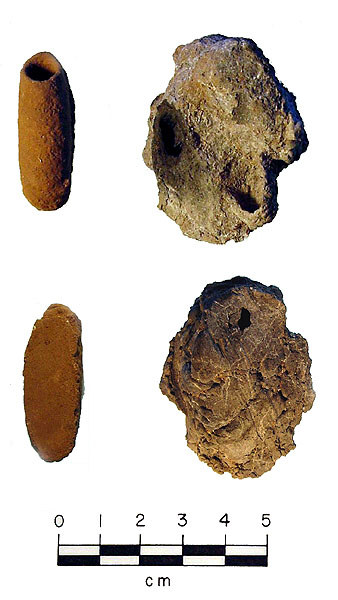
Comparison of burned mud dauber nest (right) found on the floor of Hank's House with a modern example (left). Mud daubers, a type of wasp, build their nests by collecting wet mud and shaping it into cylindrical tubes, or cells, within which eggs are sealed. The modern example is a single cell, but the 700-year-old nest found in Hank's house contained four cells, one of which is complete and still sealed. The nest survived because the mud was baked when the house burned. Photos by Doug Boyd.
The top row shows the "front" view of the nests, while the bottom row shows the back of the nests. On the back side of every mud dauber nest is an impression of the material to which it was attached. In the lower left, the modern nest is flat because it was attached to a piece of cut lumber. In contrast, the back of the nest from Hank's house (lower right) has impressions of grass and sticks, suggesting that it was probably attached to the underside of the roof of the house.